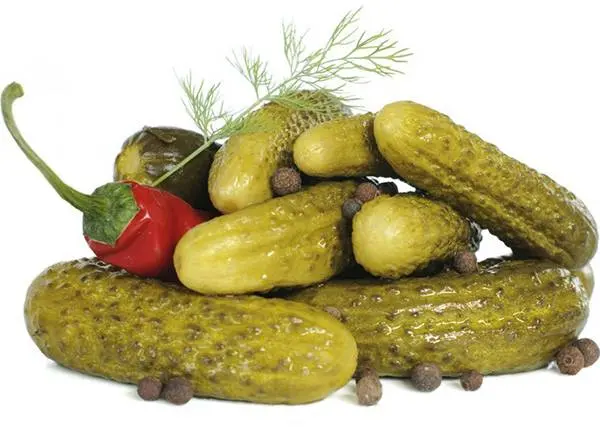The Phoenix variety has a long history, but is still popular among gardeners in Our Country.
History of the variety
Cucumbers of the Phoenix variety were bred at the breeding station in Krymsk by Medvedev A.G. In 1985, an epidemic of downy mildew raged, which affected vegetable growers in Hungary, Bulgaria, and the GDR. Then the disease reached the southern regions of the Soviet Union.
At first, diseases were resisted, so there were resistant varieties, but downy mildew changed, mutated, and it became impossible to fight it. But, having experience in this area, Soviet scientists in 1990 brought out a new variety of cucumbers, which was designated by the numbers 640, but then received the big name Phoenix. Like a mythological bird, the plant rose from the ashes into which cucumber tops turned from exposure to downy mildew. Phoenix turned out to be resistant to the cucumber mosaic virus.
Literally in a year, it was possible to propagate the Phoenix cucumber variety, the seeds of which were received by vegetable farms. The work of breeders continued, F1 hybrids were bred on the basis of Phoenix, with directional properties: do not depend on insect pollinators, disease resistance, good taste. Look at the photo to see what the plant looks like.
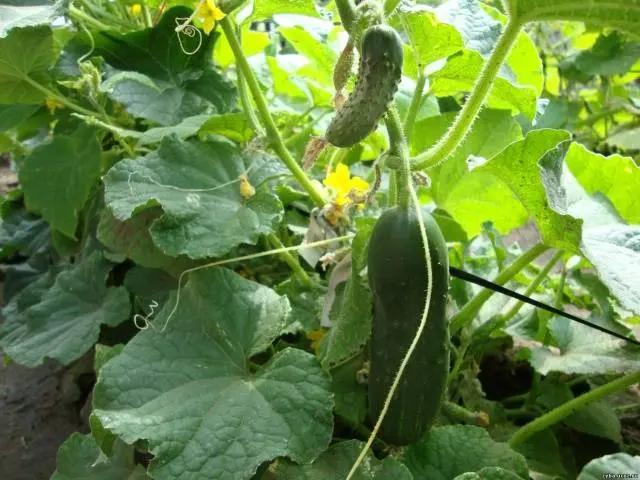
Description
Cucumber variety Phoenix 640 is intended for cultivation in open ground. Refers to late-ripening, from planting in the ground takes about 60 days before fruiting. The lashes of the plant are powerful, strong, grow up to 3 m long, it is best for them to organize a support.
Cucumber Phoenix fruit description: cylindrical, oval-oblong green color with light greenish longitudinal stripes. Fruit weight up to 150 g, length up to 15 cm, they have tubercles with white spikes. Cucumbers are good for fresh use, in conservation and pickling. The plant bears fruit as long as weather conditions allow, when other varieties of cucumbers have already ceased to bear fruit. Subject to agricultural technology, it gives high yields, from 1 sq. m you can collect 2,5-3,5 kg of cucumbers. The plant is pollinated by insects.
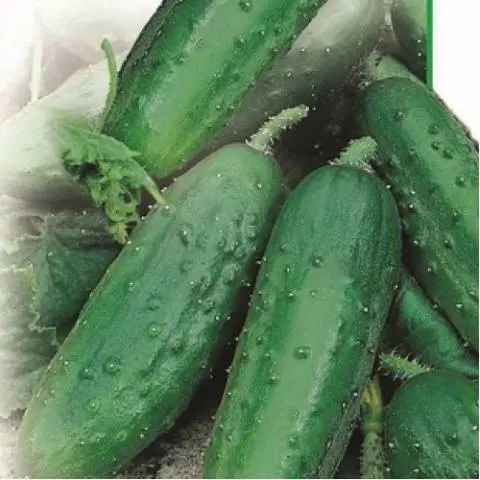
Phoenix Plus Cucumbers are created by the same breeder. But they have slightly different characteristics, in contrast to the Phoenix 640 variety. The variety belongs to mid-season, it takes about 45 days from planting in the ground until the fruit ripens. The plant is more compact, medium-sized, medium-branched. The leaves are small, light green.
The fruits are neat, weighing up to 60 g, up to 12 cm long, dark green, pimply, have a slight white pubescence. The use of fruits is universal: they are suitable for preparations, for salads and fresh consumption. Phoenix plus is resistant to powdery mildew and tobacco mosaic virus. In the new variety, the property of resistance to diseases is even more fixed. The advantages of the variety include a higher yield compared to the base variety: more than 6 kg per 1 sq. m.
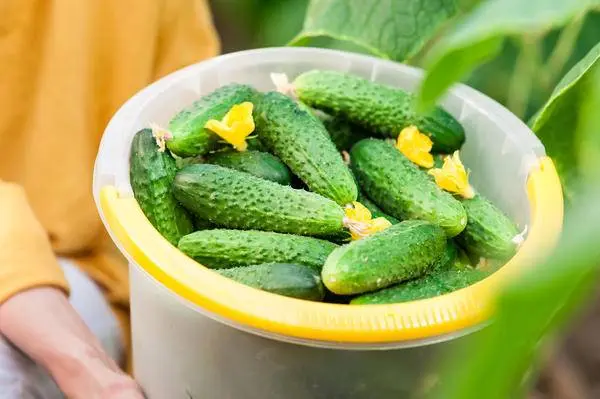
Cultivation
Growing Phoenix cucumbers does not differ much from other varieties. They were bred as ground. Seeds can be planted immediately in open ground or pre-grown seedlings.
Landing in the ground takes place in late May – early June, when positive average daily temperatures are established, and the threat of a return of May frosts is over. The temperature of the soil should be more than +15 degrees. At first, while the night temperatures are quite low, use arcs on which to stretch the covering material.
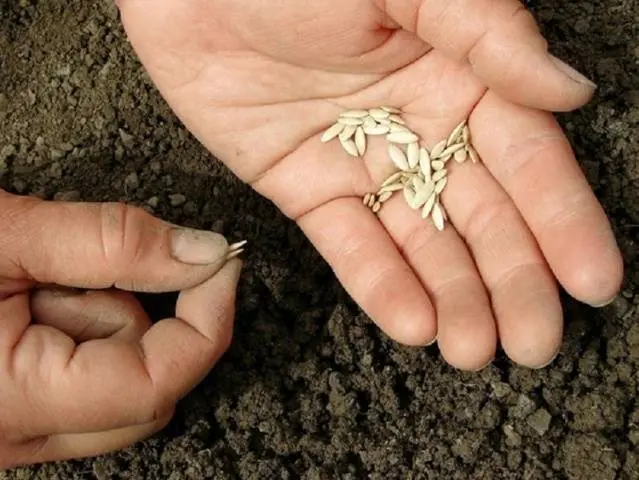
If you decide to grow seedlings of cucumbers, then take care of planting them in early May. Plants are best planted outdoors when they have 2-3 true leaves. At the end of May, plant the plants in open ground.

Covering material can be abandoned when daytime temperatures are at least +22 degrees, and nighttime temperatures are +16 degrees. At lower temperatures, plants stop growing, so a fallback is needed to keep warm as a covering material.
Before planting, prepare the soil, apply rotted manure, dig.

Cucumbers love light, porous soil composition. They do not like heavy clay soils that are prone to stagnant moisture. There is a way out: the composition of the soil is improved by the introduction of humus, sand, peat. The methods are not expensive in finance, but will allow you to significantly improve the yield.
The Phoenix variety grows best when following the 50×40 cm pattern when planting in a row or in a checkerboard pattern. Phoenix cucumbers plus will save you a little space, for them the planting pattern is 40×40 cm.
Before planting, soak the Phoenix cucumber seeds in a weak solution of potassium permanganate. After planting the seeds, cover the bed with plastic wrap.
The Phoenix variety belongs to those varieties that are “planted and forgotten.” But with proper regular care, the plants will thank you with a bountiful harvest. Keep in mind that cucumbers are 90% water, so they just need regular watering. Water as the top layer of soil dries, more often on dry days, it is better to water with water that has warmed up during the day in the evening to avoid leaf burns.
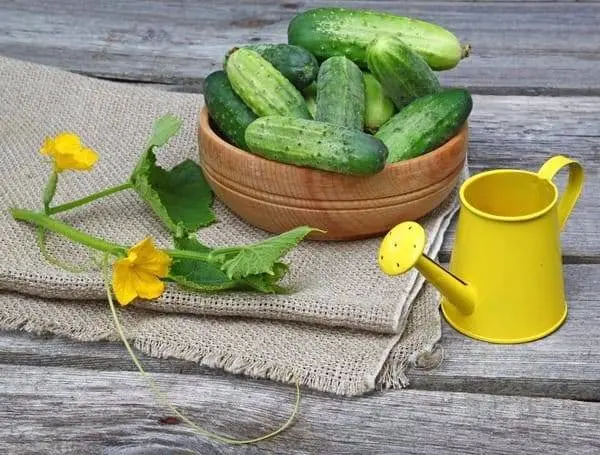
Phoenix cucumbers like regular feeding, respond with rapid growth and fruiting. Combine top dressing with mineral and organic fertilizers. An infusion of bird droppings, manure or plants stimulates the formation of green mass. Top dressing with mineral fertilizers promotes fruit formation. You can use ready-made mineral mixtures for feeding cucumbers, for example, Kemira-lux, which will prepare the plant for the fruiting period. The fertilizer has been tested by gardeners, the plants become strong and hardy, the yield increases by 30%.

The Phoenix variety gives an increased yield if the plant is tied up and formed into a cucumber bush. You can pinch the main stem, which will lead to additional lateral branching of the plant.
Harvest fruits in 1-2 days. Cucumbers quickly outgrow and lose their taste. In addition, they attract moisture and nutrients, which are so necessary for flowering and the formation of ovaries. For tips on growing cucumbers, see the video:
Conclusion
The Phoenix variety has established itself as a reliable plant, resistant to disease, to the lack of regular watering. Cucumbers will delight you with their abundance and taste properties, both fresh and prepared.
